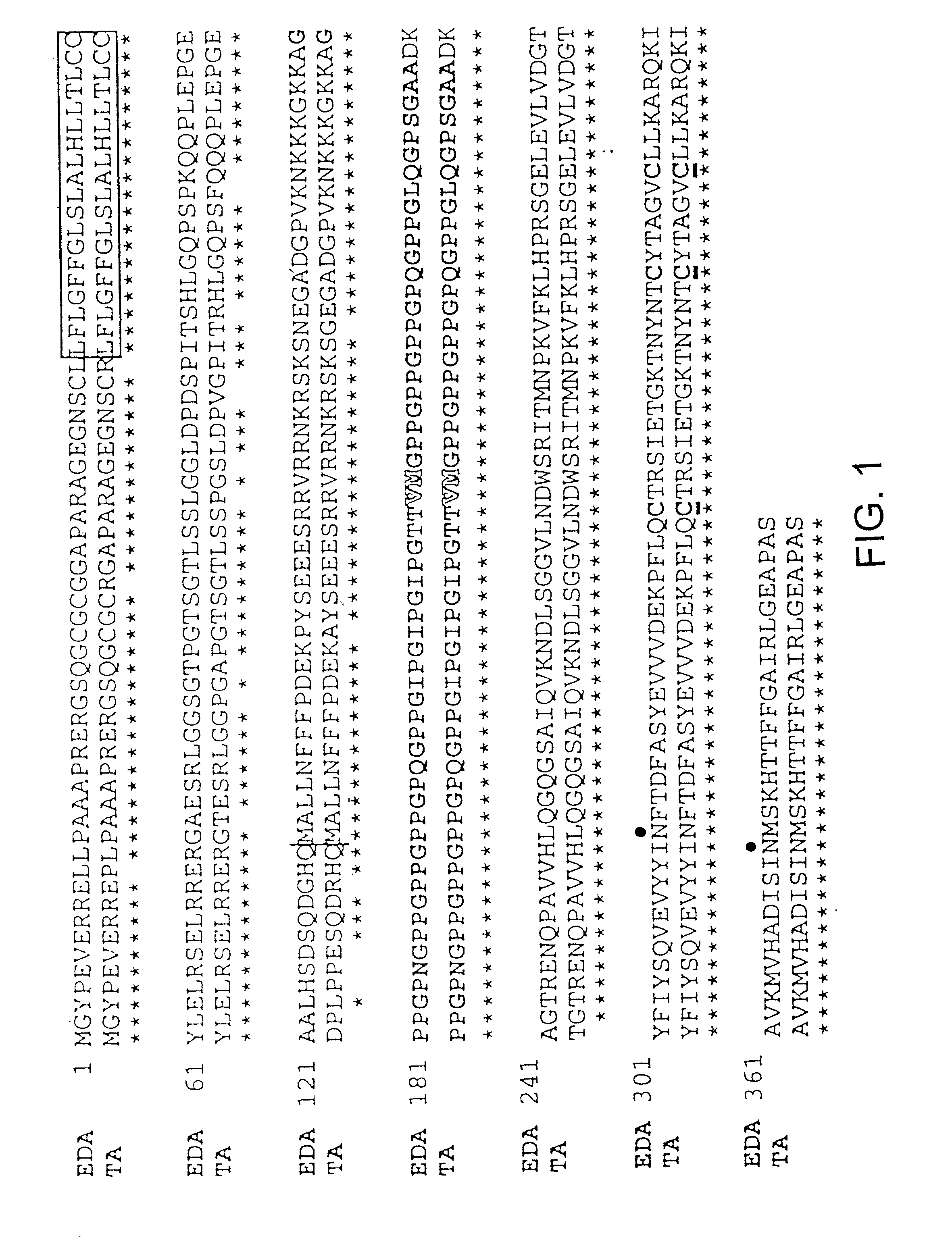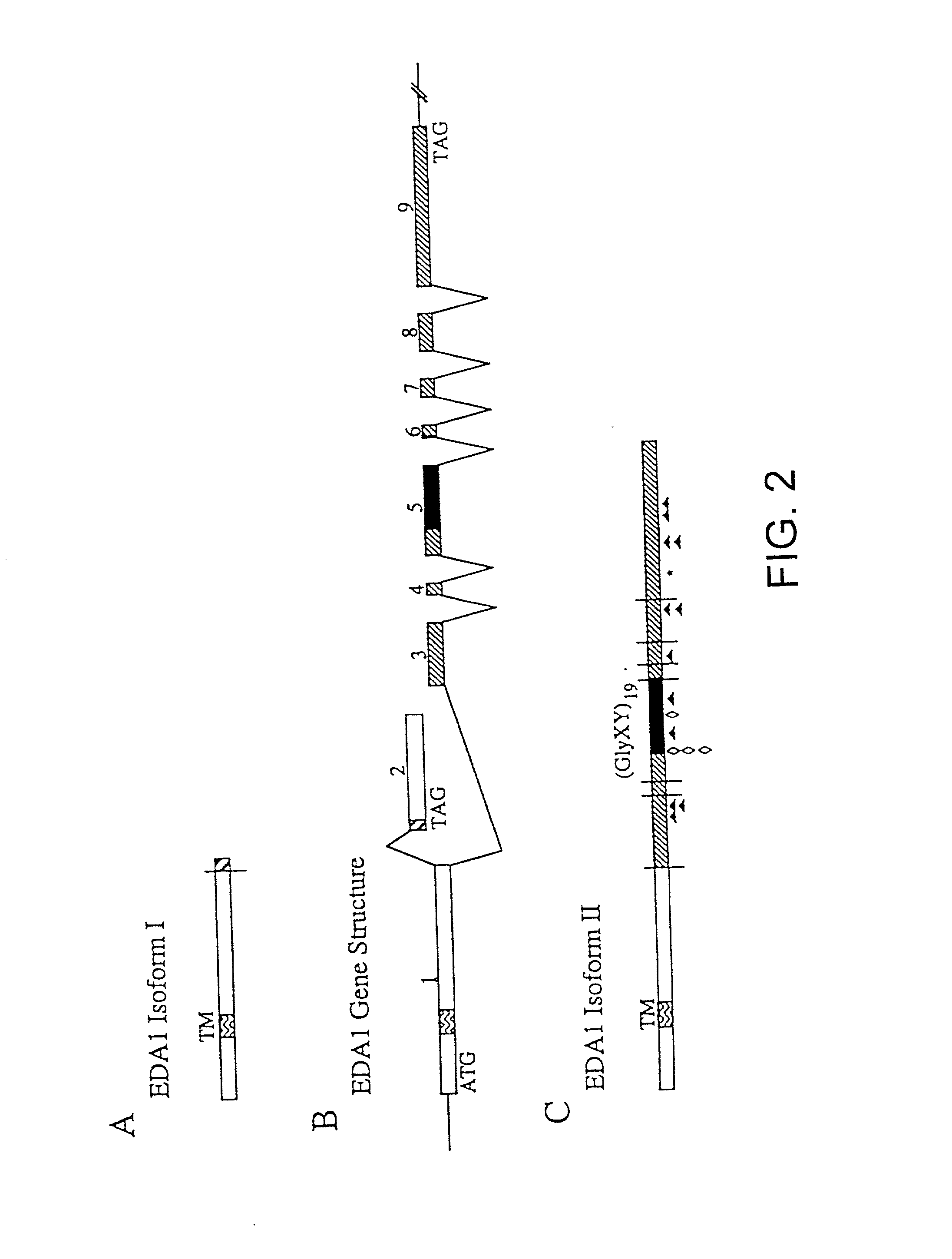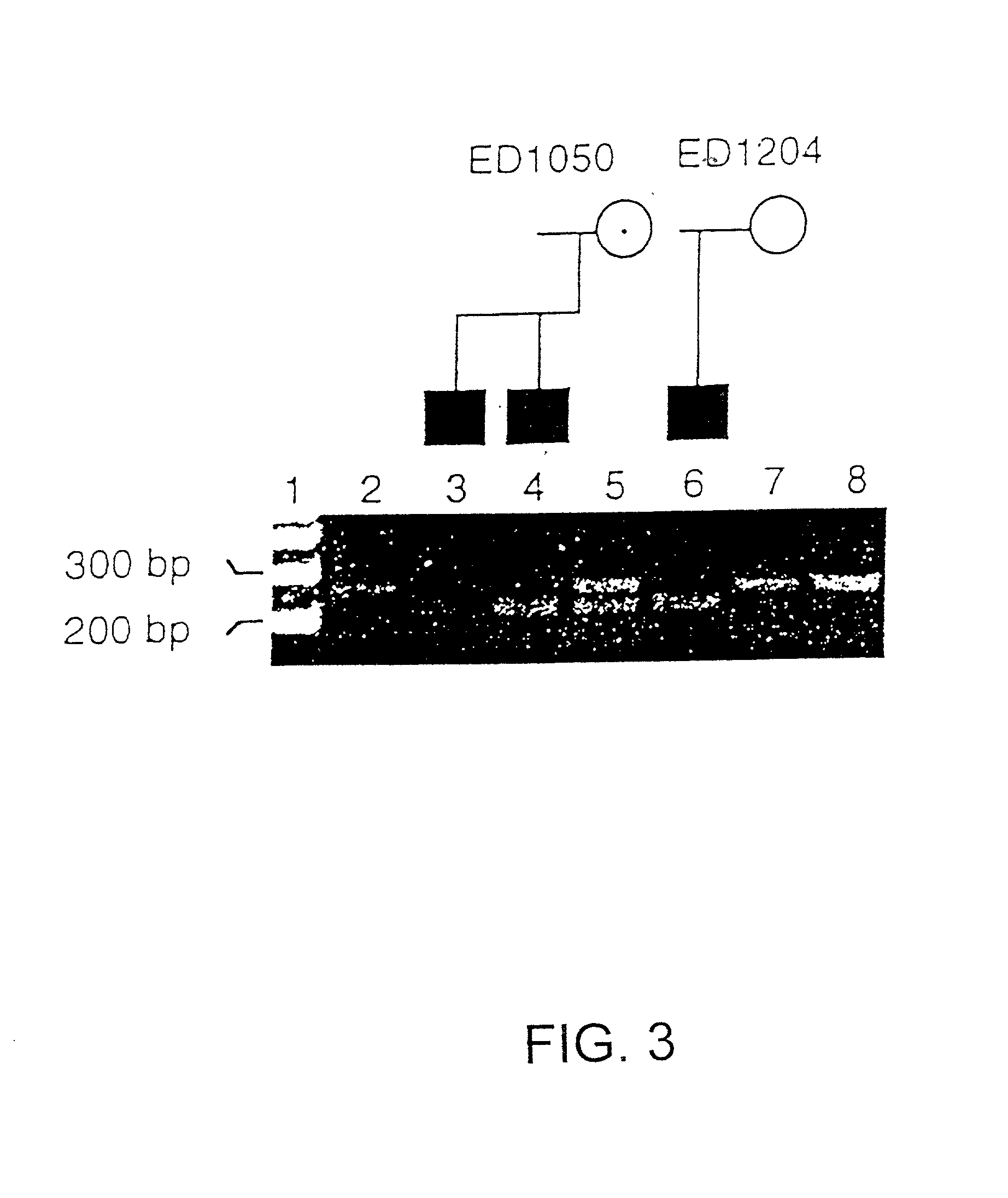Hypohidrotic ectodermal dysplasia genes and proteins
- Summary
- Abstract
- Description
- Claims
- Application Information
AI Technical Summary
Benefits of technology
Problems solved by technology
Method used
Image
Examples
example 1
Cloning of Human EDA1 Isoform II (EDA1-II)
[0173] This example discloses the methods used to clone an EDA1 cDNA splice-form that is homologous to the murine Ta cDNA. This novel splice form codes for a putative, second isoform of the EDA1 protein (isoform II). Cloning of the Ta gene (GenBank Accession No. AF004435) was previously disclosed (Ferguson et al., 1997, Hum. Molec. Genet. 6:1589-94, hereby incorporated by reference in its entirety).
[0174] A human cDNA library constructed with mRNA isolated from 20-22 week fetal liver tissue was obtained from Clontech, Inc. (Palo Alto, Calif.). PCR primers were derived from the homologous murine gene, Tabby, and are published (see Table 1 in the erratum Monreal et al., 1998, Am. J Hum. Genet. 63:1253-55, which corresponds to the publication Monreal et al., 1998, Am. J Hum. Genet. 63:380-9, both hereby incorporated by reference in their entirety). PCR reactions for cDNA amplifications included 16.6 mM (NH4)SO.sub.4, 67 mM Tris (pH 8.8), 6.7 mM...
example 2
Structure of EDA1-II
[0180] The EDA / Ta proteins (FIG. 1) can be divided into five domains. Listed from N- to C-terminus they are: a cytoplasmic domain (residues 1-41), a transmembrane domain (residues 42-60), an extracellular domain with furin cleavage site (residues 61-179, with potential furin cleavage site at residues 153-156-RVRR), a collagen-like domain (residues 180-238) and a TNF domain (residues 239-391).
[0181] The EDA1-II protein is related to the TNF family of proteins and includes a single transmembrane domain and, like EDA1 isoform I (EDA1-I), is believed to be a cell surface protein with a type II orientation (the C-terminus projecting extracellularly) (Ezer et al., 1997, Hum. Mol. Genet. 6:1581-7). A predicted collagen domain (Gly-X-Y).sub.19 may form a triple helix with either itself or the collagen domain of other proteins, resulting in the formation of either homo-trimeric or hetero-trimeric complexes. Three cysteine residues present in the C-terminal domains of the ...
example 3
Expression Analysis of EDA1-II
[0186] This example describes methods used to examine the expression pattern of EDA1-II. Similar methods can be used to determine the expression pattern of EDA1-II, or variants, mutants, fusions, or fragments thereof, in any tissue.
[0187] Human Multi-Tissue Northern blots I and IV (Clontech, Inc.) were hybridized with a .sup.32P labeled PCR product that included exon 1 to exon 9 (PCR primers shown in Table 1 of the erratum Monreal et al., 1998, Am. J. Hum. Genet. 63:1253-55). The filters were hybridized and washed according to the manufacturer's recommendations. The signals were visualized using Kodak X-Omat film with an exposure time of three days.
[0188] Northern analysis of RNA isolated from several human tissues (brain, heart, placenta, lung, liver, muscle, kidney, pancreas, spleen, thymus, prostate, testis, uterus, small intestine, colon, and leukocytes), hybridized with exons 1-9 of the cDNA, detected a 5-6 kb transcript. No additional hybridizatio...
PUM
| Property | Measurement | Unit |
|---|---|---|
| Fraction | aaaaa | aaaaa |
| Fraction | aaaaa | aaaaa |
| Fraction | aaaaa | aaaaa |
Abstract
Description
Claims
Application Information
 Login to View More
Login to View More - R&D
- Intellectual Property
- Life Sciences
- Materials
- Tech Scout
- Unparalleled Data Quality
- Higher Quality Content
- 60% Fewer Hallucinations
Browse by: Latest US Patents, China's latest patents, Technical Efficacy Thesaurus, Application Domain, Technology Topic, Popular Technical Reports.
© 2025 PatSnap. All rights reserved.Legal|Privacy policy|Modern Slavery Act Transparency Statement|Sitemap|About US| Contact US: help@patsnap.com



